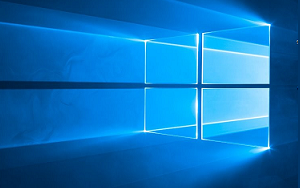Updating Google Chrome ensures you have the latest features, security updates, and performance improvements. This article provides a comprehensive guide on how to update Google Chrome on various devices, ensuring you enjoy a seamless browsing experience.
Step-by-Step Guide to Updating Google Chrome
Keeping your Google Chrome browser updated is crucial for security, speed, and access to the latest features. Regular updates not only enhance your browsing experience but also protect against vulnerabilities. This guide will walk you through the steps to update Google Chrome on different platforms including Windows, macOS, Android, and iOS.
Why Update Google Chrome?
- Security: Chrome updates often include patches for security vulnerabilities.
- Performance: New updates can improve the speed and efficiency of the browser.
- Features: Access to the latest features and tools for a better browsing experience.
- Compatibility: Ensures compatibility with modern web standards and applications.
Updating Google Chrome on Different Devices
1. Updating on Windows and macOS
Updating Google Chrome on Windows and macOS is straightforward. Follow these steps:
- Open Google Chrome.
- Click on the three vertical dots in the top-right corner of the browser to open the menu.
- Navigate to Help > About Google Chrome.
- Chrome will automatically check for updates and install them if available.
- Once the update is installed, click Relaunch to restart Chrome and apply the update.
2. Updating on Android
For Android users, keeping Chrome updated ensures optimal performance. Here's how to do it:
- Open the Google Play Store app on your device.
- Tap the Menu icon (three horizontal lines) in the top-left corner.
- Select My apps & games.
- Under the Updates tab, look for Google Chrome.
- If an update is available, tap Update next to Chrome.
3. Updating on iOS
For iOS devices, follow these steps to update Chrome:
- Open the App Store on your iOS device.
- Tap on your Profile Icon at the top right corner.
- Scroll down to see pending updates and release notes.
- Find Google Chrome and tap Update if available.
Automatic Updates
Chrome is designed to update automatically, but certain settings or configurations might prevent this. To ensure automatic updates:
- Ensure you have a stable internet connection.
- For Windows users, check that Google Update Service is running:
- Press Win + R, type services.msc, and hit Enter.
- Scroll to find Google Update Service (gupdate) and Google Update Service (gupdatem).
- Ensure both services show Running and are set to Automatic.
- On macOS, ensure automatic updates are enabled in System Preferences > Software Update.
Troubleshooting Update Issues
If Chrome doesn't update automatically or if you encounter issues:
- Ensure your device has enough storage space.
- Check your internet connection.
- Restart your device and try updating again.
- For persistent issues, consider reinstalling Chrome:
- Uninstall Chrome from your device.
- Download the latest version of Chrome from the official Google Chrome website.
- Install the downloaded version and check for updates again.
Checking Your Chrome Version
To verify that you have the latest version of Chrome installed:
- Open Google Chrome.
- Click the three vertical dots in the top-right corner to open the menu.
- Navigate to Help > About Google Chrome.
- The current version will be displayed, and Chrome will check for updates.
Conclusion
Regularly updating Google Chrome ensures you have the latest features, security updates, and performance improvements. By following the steps outlined in this guide, you can keep your browser up to date across all your devices. This not only enhances your browsing experience but also keeps you safe from potential security threats. Stay informed and enjoy a seamless browsing journey with Google Chrome!







